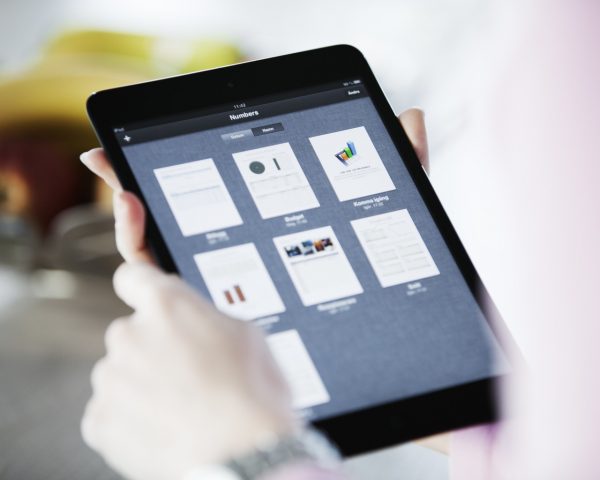Note that this article was first published on the Norwegian blog in June 2019 and you can read the original article here.
Through several years, I’ve been following the discussions and debates related to the topic “digitalisation” with huge interest, because of both professional and private reasons: professional reasons because the company I represent exists to digitise companies; private reasons because it’s exciting to see the increasing use of technology to industrialise more businesses.
But what does it really mean to digitise a process? Gartner is making a lot of interesting points regarding this question, which also has been the inspiration for this article.
Getting rid of the paper

In the early days of digitalisation, parallels were drawn between digitisation and “getting rid of the paper”. Also, self-service solutions were included in these early thoughts and ideas, and it has indeed been central in streamlining data collection and management.
There are many advantages and considerable efficiency improvements in this; one does not have to spend time punching data manually, you ensure a consistent collection of data, it improves the data quality, makes it easier to share information and give more people immediate access to the data. But is this truly digitalisation? And what about the customer then – does this create a better user experience?
Seen from a company’s viewpoint, automation will, in most cases, always be a good investment, as it standardises a process so that machines can take over some of the workload.
Use of self-service works in the same way, as you transfer what initially was time-consuming tasks for your employees and hands it over to the customers. This way, you free up company resources.
But does this create a good experience for the customers? Is standardisation of paper flow really the big leap forward? Does it make it easier for the customers?
The answer is no. In the global economy, it is not necessarily the case that customers want to deal with rigorous and highly standardised processes. Nor is it the case that standardised processes always give the best result, they only ensure an equal approach in the process and an equal outcome given the same input.
The bottom line: Self-service is easy if it is in the customer’s interest to deliver information, but does not work as well if it does not have a clear positive effect for the customer.
What does digitalisation really mean?

In my opinion, digitalisation means that the customer doesn’t have to relate to processes; they won’t have to register their data but instead receives benefits and services automatically according to their rights, needs, and consumption.
The complexity of digitisation lies, among other things, in the fact that reality is very rarely a single process. Reality consists of value chains with a large number of interconnected processes, which often cross both individuals, private companies and public actors.
Within digitalisation, we often talk about “digital maturity”, and we can define the maturity using the steps in the so-called digitisation ladder:
- Paper based
- Standardisation
- Self-service and interacting
- Automated
- Optimised and learning
Today’s technology is mature enough for us to solve a lot of the complexity within digitalisation, and at the same time, it is completely necessary in order to reach the top maturity steps in the digitalisation ladder.
Relevant technologies for value generating digitalisation is IoT (Internet of Things), advanced data analytics and machine learning & artificial intelligence. In order to go all in on digitalisation, one must look past standarisation and manual data collection; one must use insights to decide upon adapted action and outcome, and one must accept the machines.
As Gartner once said: “Race with the machines, not against them!”
Five good examples of digitised processes through the use of new technology
1) Sensors in medical equipment
Sensors in medical equipment open up for automatically monitoring of a patient’s condition, automatically dosage of medication, and frees up the nurses time that was previously spent on administrative tasks – so that they get more time for personal follow-up of the patient.
2) Sensors to detect Alzheimer’s at an early stage
Another example of using new technology is to place sensors in clothes to detect Alzheimer’s at an early stage. This works because the sensors are able to detect and capture changes in motion patterns, which is characteristic of this early stage disease. In the future, it will also be able to contribute to better prevention of the disease.
3) Use of machine learning in supervisory activities
Use of machine learning in supervisory activities to manage resources and work efforts in areas where the risk and need for supervision are greatest.
4) Use of machine learning to optimise utilisation of hospital operating rooms
Use of machine learning to optimise utilisation of hospital operating theatres or rooms, thereby removing queues and waiting lists for important purposes.
5) Use of sensors in trash cans to make sure it is emptied whenever full
Sensors in trash cans give huge savings in driving routes and also lower the cost for you as a customer by making sure the trash is emptied whenever it’s full rather than on fixed pick-up times.
So, the question is: is new technology a threat? No, it gives us valuable insights that open up for an individual and customised outcome in each unique situation. It also brings the opportunity to identify new and more self-developing human work tasks. This way, new technology can be seen as an accelerator for innovation, because we need to re-think traditional work tasks that can now be done by technology.
Want to learn more about how we work with technology to create better solutions for the future?
